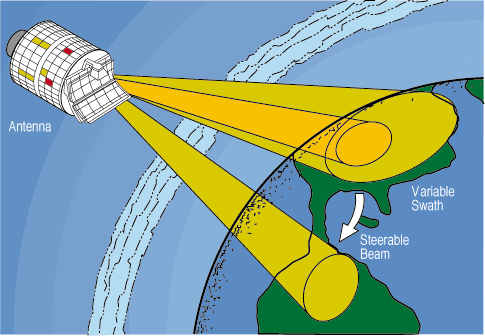Recent studies have shown that reflector surface adaptation can achieve significant performance enhancement without the complexity and cost associated with phased array technology and . The work proposed in this study develops a class of antennas capable of variable directivity (beam steering) and power density (beam shaping). This is shown in figure 1.

Figure 1. Active Aperture Antenna Concept
The actuation for these antennas is employed by attaching polyvinylidene fluoride (PVDF) film, PZT (Lead Zirconate Titanate) patches, or Piezoelectric point actuators to a metalized mylar substrate. A voltage drop across these materials will cause the material to expand or contract. This movement causes a moment to be developed in the structure, which causes the structure to change shape.
Several studies of flexible structures with PVDF films, PZT patches and Piezoelectric Point actuators have shown that mechanically active antennas can achieve significant deflections and thereby offer beneficial changes to radiation patterns emanating from aperture antennas. In this studies, actuators are modeled and deflection vs. force relationships are developed. The relationships are then employed in simulations where the far field radiation patterns of an aperture antenna are manipulated. Finally, the deflection versus voltage relationship is verified using experimental methods.
